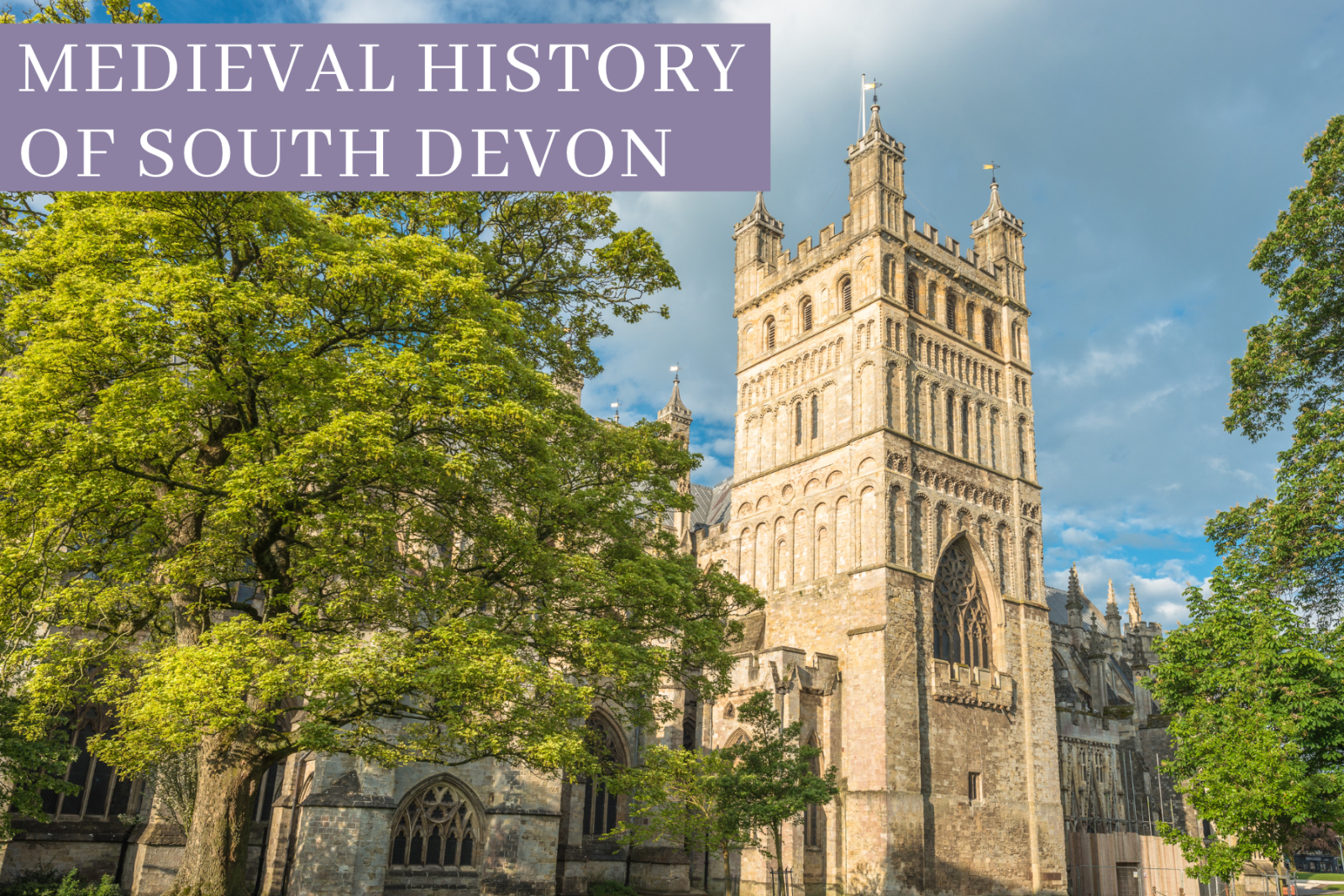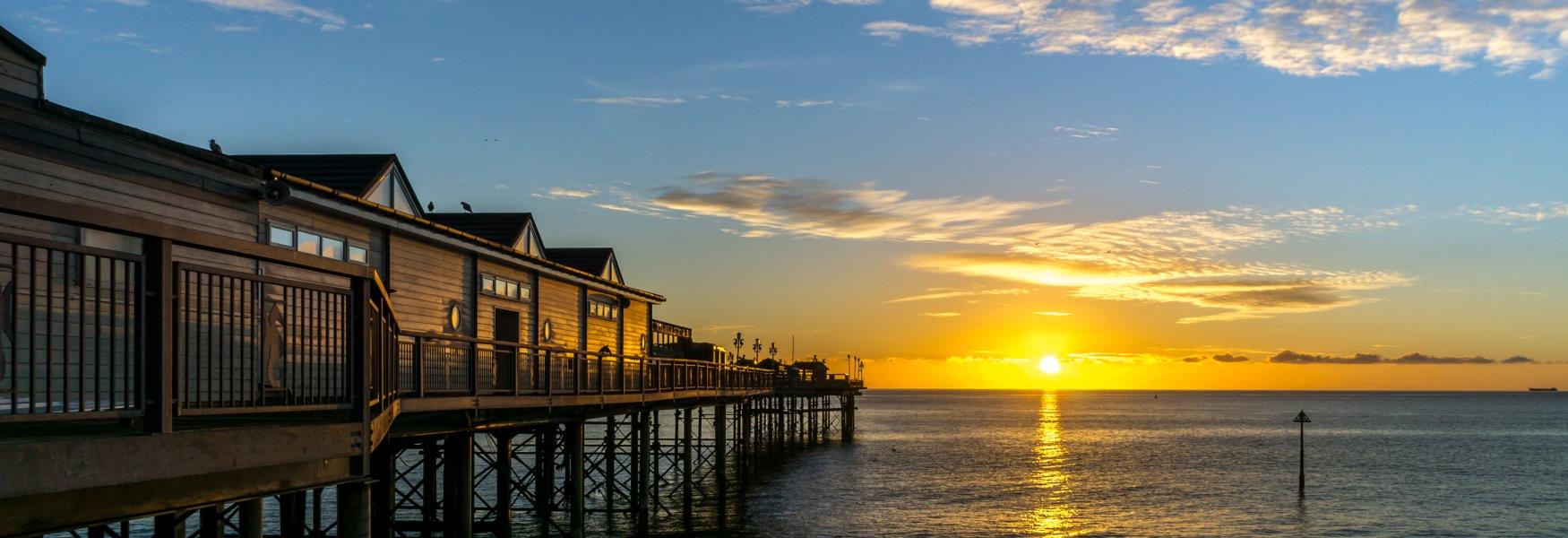
Devon’s history spans across many thousands of years. Kents Cavern is one of the earliest places in England known to be occupied by modern man, so it’s no surprise that the region is rich in archaeological finds. Much of Devon’s towns have their origins in the Saxon period but places such as Newton Abbot and Honiton were created in the medieval period. Other towns, such as Totnes, are older but have plenty of notable medieval architecture such as town walls, streets and house plots. Most of Devon’s villages were present in the 10th and 11th centuries and the churches built in these villages are perhaps some of the most important and still ooze with history and heritage. There is also an abundance of other medieval buildings in the region such as fortified manor houses and striking castles which used to house many lords of England.
Before the medieval period, the Romans ruled Britain from 43 AD for around 400 years. Whilst they did bring Catholicism with them, the Romans made less of an impact in Devon compared to other counties as the Dumnonii, the name given to the locals by the Romans, mostly resisted Romanisation. After the Romans left, the Anglo-Saxons arrived from Germany and Holland to conquer Britain, before the Viking invasion arrived in the 9th century. Alfred the Great fortified Exeter as a defensive burh, followed by Lydford, Halwell and Pilton. The Norman conquest allowed for the defeat of the Vikings in the West Country, but a few Norse placenames remain, such as Lundy Island, off the coast of North Devon.
William the Conqueror recognised the importance of securing the West Country and tried to take Exeter in 1086 and after an eighteen-day siege, he was allowed to enter upon honourable terms. The construction of Rougemont Castle in Exeter was ordered by William, and the remains of this can be found in the centre of the city today. The many great estates held by William’s barons were known as ‘honours’ and amongst them were Plympton, Okehampton, Totnes and Harberton. The honour of Plympton, along with the Earldom of Devon was given to the Redvers family; you may have spotted several statues and monuments dedicated to the Redvers family dotted around the county. This was then passed to the Courtenays, another name which holds a lot of importance in Devon today.
The people who lived in Devon during the medieval period prospered. Whilst Devon was predominantly a farming area, the Domesday Survey of 1086 recorded 99 mills and 13 fisheries. The climate improved as the years passed which allowed the growing season to be even longer and so the population of people here increased. As the competition for viable farming land increased with the population, people were forced to start farming higher up on Dartmoor. Some settled on prehistoric sites, created by their Iron and Bronze age ancestors, and others would create entirely new settlements. Some remains of medieval longhouses are still present on the moors, allowing you to trace the steps of those who came before and imagine how they would have lived. Longhouses were traditional throughout northern Europe at the time, most of them would have been designed to ensure the warmth of both the people who lived there and their livestock in the winter months. There would have been partitions in the house which separated the livestock from the families, and some houses may have had separate living and sleeping quarters.
People lived and thrived here for many years until the 14th century. In the early 1300s temperatures on the moors would drop quite dramatically and high rainfall caused harvest to fail, leading to nation-wide famine. The climatic downfall, combined with the onset of the Black Death forced many Dartmoor villagers and settlements to abandon their land. They left behind the remains of the farmsteads and huts, much like those at Hound Tor, or Hundetorra as it would have been known.
Meanwhile, in Exeter, the middle ages were a period of rapid growth for the city. Sitting on the River Exe, it grew from a Roman town into a medieval cathedral city. It became a big religious and commercial centre with the iconic cathedral being founded in 1050 and completed in the 1400s, after being demolished in 1260 and rebuilt again. You can discover Exeter’s medieval history by embarking on the town’s medieval trail. Exeter’s underground history can also be explored with the Exeter Underground Passages, which were originally built to bring clean water into Exeter, but is now an exciting historical attraction.
Many castles were built during the medieval period and many of them still remain today, although some are mere ruins. The top medieval castles to visit here are Tiverton Castle, which was once a castle but was transformed into a country house in the 17th century. Okehampton castle is another exquisite medieval castle and was once the largest in Devon; it’s also thought to be haunted! Totnes Castle is another great example of a surviving Motte and Bailey Castle and it’s conveniently located a few minutes away on foot from the town centre. As Christianity was the dominant religion for over 1500 years, many churches were built in parishes and about 30 medieval monastic houses were constructed, the remains of which can be striking but very fragmented, such as Tavistock Abbey. Buckfast Abbey on the other hand, still stands magnificently on the edge of Dartmoor National Park and is home to a community of Roman Catholic Benedictine Monks. The Abbey Church and Monastery stands on the site where the original Abbey was founded in 1018 AD. It thrived during the medieval period but after the dissolution of the monasteries under King Henry VIII in 1538 it fell into ruin. It was rebuilt stone by stone upon its medieval foundations by a group of French monks. Today Buckfast Abbey is a popular tourist attraction where you can admire the stunning architecture and enjoy the calm atmosphere in gardens.
The communities that survived on the lower land began to prosper again, due to the vibrant wool and tin industries from the 12th – 18th centuries, as did the quarrying of granite, slate, red sandstone and Beer stone. Devon’s huge network of roads and lanes evolved in the medieval period and important bridges built then still survive today in Exeter, Clyst St Mary and over the Tamar. The Exeter canal is one of the oldest canals in the country, and whilst it’s been extended and improved on in later years, it was built in the 16th century.
We hope you enjoyed reading this brief, but fascinating history of medieval Devon. If you’re interested in learning more about the Devon’s past, head to our History & Heritage blog post section here. Stay up to date with the latest Visit South Devon blog posts, competitions and more follow us on Facebook, Twitter and Instagram. If you visit any of our historical sites, feel free to tag us using @visitsouthdevon for a chance to be reposted.
Related
Comments
Comments are disabled for this post.



 to add an item to your Itinerary basket.
to add an item to your Itinerary basket.









